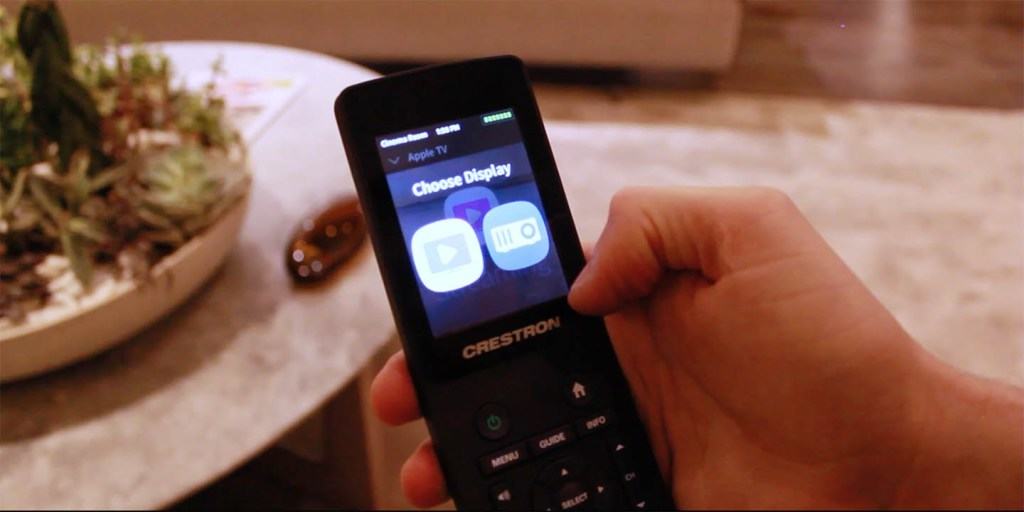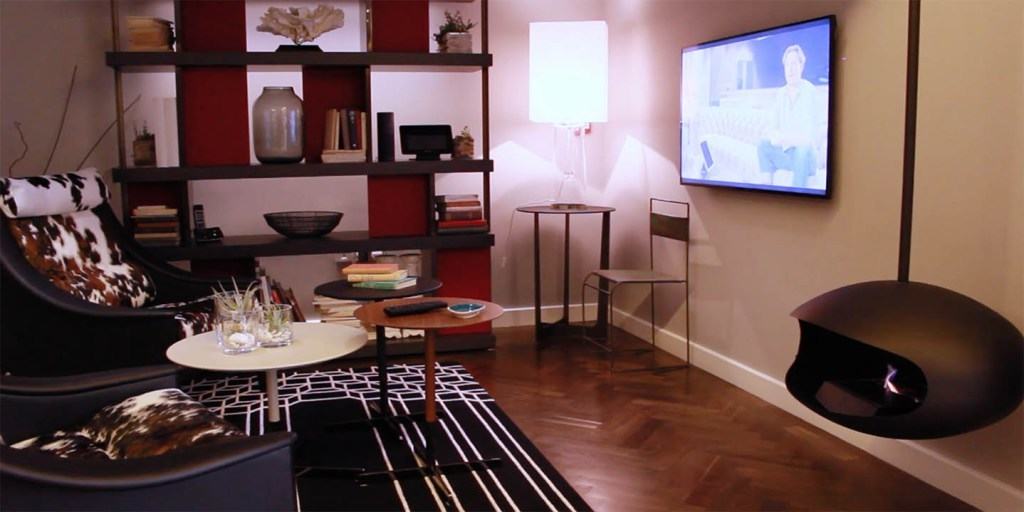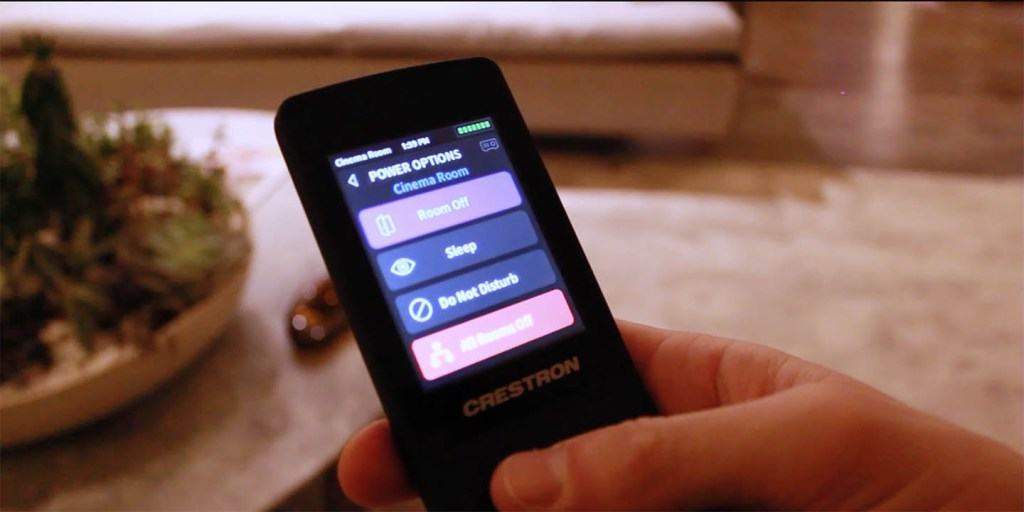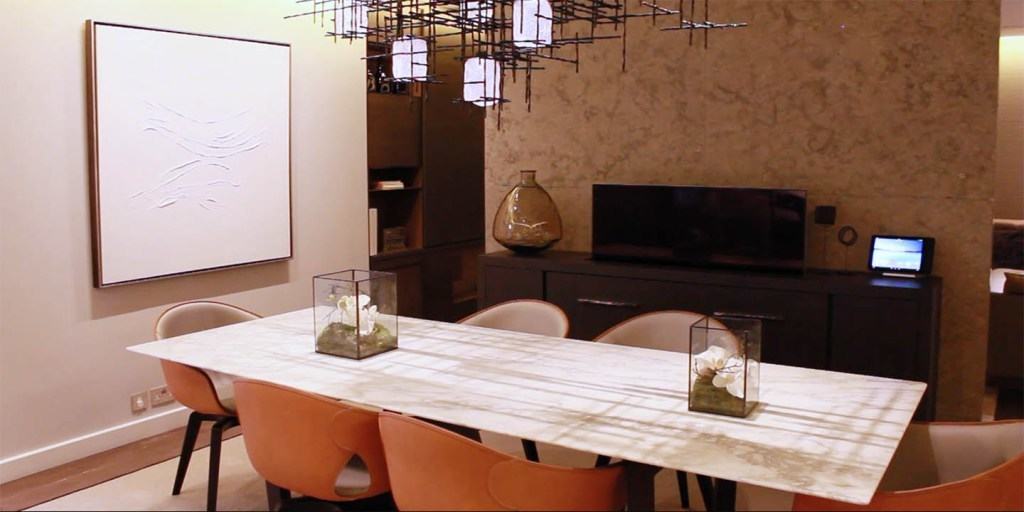It is hard to have a discussion about the smart home market without at some point mentioning Crestron. The US-based home automation systems manufacturer has been a ubiquitous presence at the top of the sector for many years now, trading on a storied history of reliability, compatibility and one of the most complete smart home packages available.
Considering the wealth of possibilities that the Crestron platform offers, it can be difficult to provide a comprehensive, useful review of what can be achieved with the system. To this end, Connected Lifestyle headed down to the company’s ‘showhome’ in the Design Centre, Chelsea Harbour, which has been recently renovated to create a simulacrum of a home environment and demonstrate how Crestron can fit into each and every room of a property.
Designed for comfort
One of the pillars of strength of the Crestron system is its ability to handle several different home entertainment systems in the home and make it easy to switch video sources between, say, Apple TV and Sky, or from watching a Blu-Ray to streaming via an Amazon Fire TV unit. This can be achieved through a number of interfaces, from a tablet or smartphone through the Crestron app to the dedicated TSR-302 remote, which comes with a touchscreen to improve navigation and gives the user access to all systems in the house without having to leave the sofa.
A clean and simple interface that can be customised to the user’s wishes makes it easy to navigate between systems and settings, while prompts can be built in so that, for example, when a video source is selected, the interface prompts the user to select whether they wish to watch on the TV or whether to set up the projector, dim the lights and play out over that. Cutting down on the number of steps the user needs to take is a crucial element of a well-designed smart home, and Crestron does this admirably.
Beyond the living room
As well as home entertainment systems, Crestron is able to control a number of other systems, including lighting, shades, heating, security cameras and even motorised features such as retractable TVs and dividing panels. Lighting-wise, it is relatively easy to adjust and set certain lighting scenes through the app – simply set the room to how you want it and press down and hold a scene button to override settings.
 The multiple interface approach also suits Crestron here – lights can be managed manually or pre-set scenes activated via smart keypads and switches, the Crestron app or even the smart remote. The selection of Crestron keypads available is perhaps not quite as diverse as those offered by Lutron; however, the Crestron platform can integrate well with Lutron if a homeowner wants to play to the strengths of both systems.
The multiple interface approach also suits Crestron here – lights can be managed manually or pre-set scenes activated via smart keypads and switches, the Crestron app or even the smart remote. The selection of Crestron keypads available is perhaps not quite as diverse as those offered by Lutron; however, the Crestron platform can integrate well with Lutron if a homeowner wants to play to the strengths of both systems.
Crestron’s shading solution is generally fairly reliable, although there were a few small niggles with the system at the showroom that needed resolving, not least that the interface needs simplifying so as not to confuse a guest user. Being able to tie in shades with other elements of the home is a key benefit of the connected home; while Crestron is certainly not alone in offering this, it is still adds value to a home environment not to have to manage the windows and curtains separately in a room.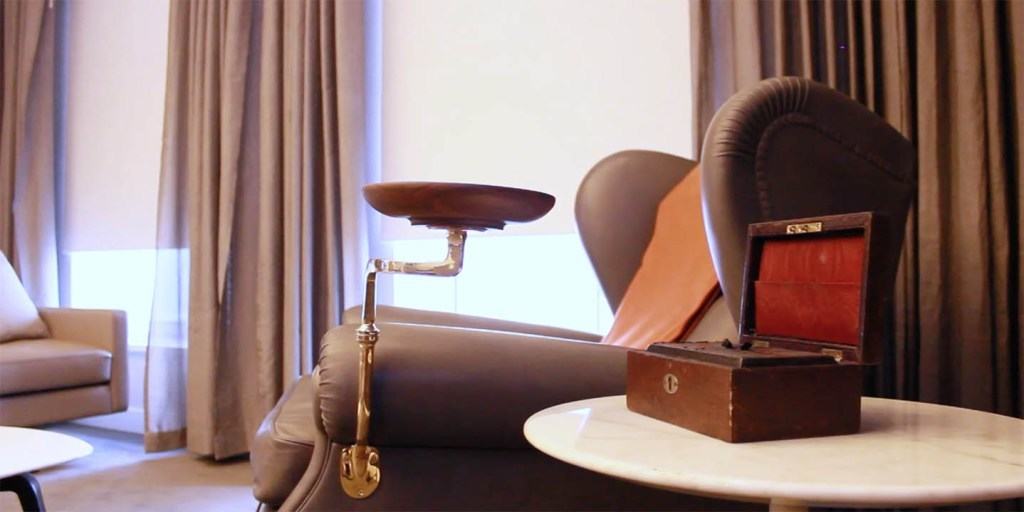
In complete control
One of the main advantages of Crestron is that, no matter where you are in the house, a control device can always be close at hand. Crestron offers a number of dedicated, standalone touchscreens as well as supporting iPad control; as these can be mounted on a wall or kept on a table or shelf, they offer a flexible way of managing a property without constantly having to resort to a light switch or control unit.
The TSR-302 remote, while useful and well-designed, is a little on the large side and can feel a bit clunky to use one-handed. That said, for instances where the touchscreen would be overkill, Crestron offers a range of smaller-form remotes that follow the same design without the cumbersome weight.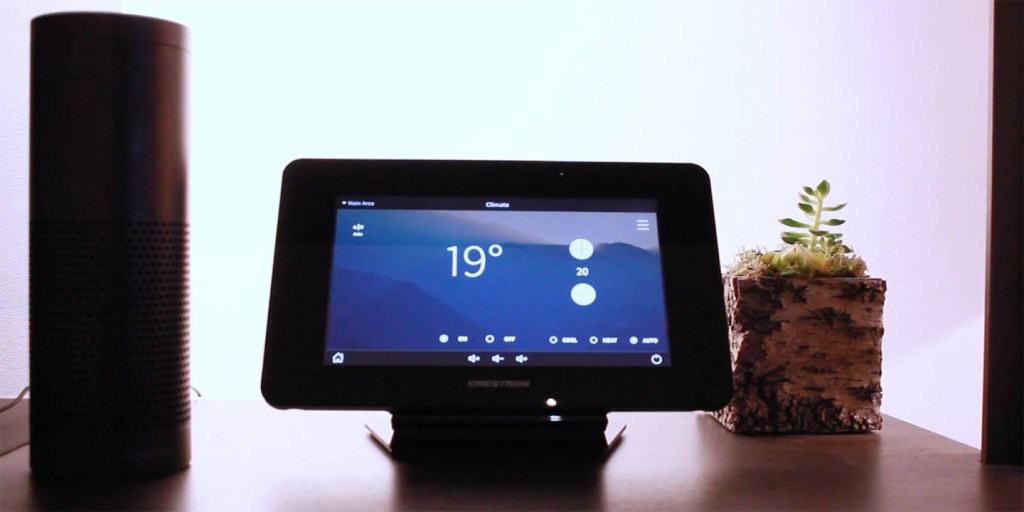
Voice recognition is a key part of Crestron’s strategy, with extensive Amazon Echo compatibility announced back in September. This link-up isn’t quite ready as of the time of writing, but the full details on the exact integration possibilities Crestron can offer to those wanting to control their home through their Amazon Echo unit are expected to be made public soon. There are no plans to incorporate Google Home ‘for the immediate future’, but this seems likely to change as the device gains in popularity.
Everything in sync
Crestron is, admittedly, one of the more expensive platforms on the market but, in terms of the functionality that it offers to homeowners, it more than justifies the price tag. Its extensive capabilities with third-party devices (new modules for emergent products are created on a regular basis) and strong legacy means that it is a secure, reliable choice for homeowners looking for a system that will last. It might not perform quite as well as some of its rivals in certain areas but, in terms of whole-house automation, it’s hard to find anyone who brings it all together any better than Crestron.
